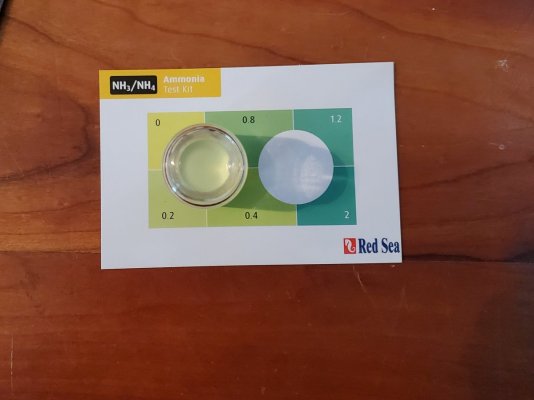So I've been testing my new tank (fowlr) with an api test (well its a transported tank, so its going through a tiny cycle) until my red sea came in.
Wow what a difference in readings. The red sea is WAY more accurate, as I have read.
So here are comparable readings from both kits
Red Sea nitrate: 50+ppm API: 20ppm
RS Nitrite: .05ppm API: 0
RS Ammonia: .2ppm API: looked like 0 but their test color is very hard to read.
PH 8.3 seemed pretty accurate for both tests.
I will be getting a hanna ph and I also picked up a hanna salinity kit.

Wow what a difference in readings. The red sea is WAY more accurate, as I have read.
So here are comparable readings from both kits
Red Sea nitrate: 50+ppm API: 20ppm
RS Nitrite: .05ppm API: 0
RS Ammonia: .2ppm API: looked like 0 but their test color is very hard to read.
PH 8.3 seemed pretty accurate for both tests.
I will be getting a hanna ph and I also picked up a hanna salinity kit.






















